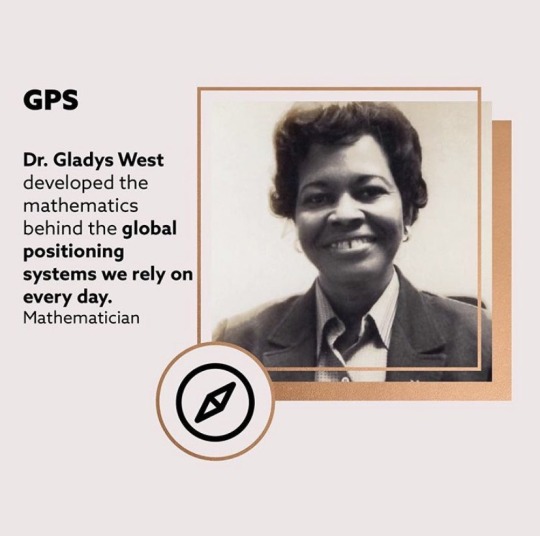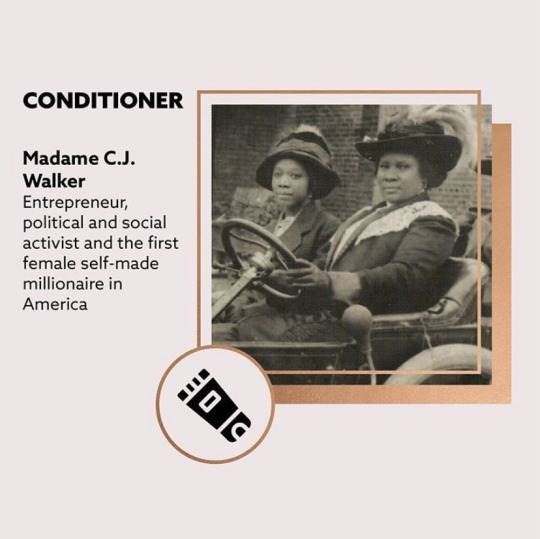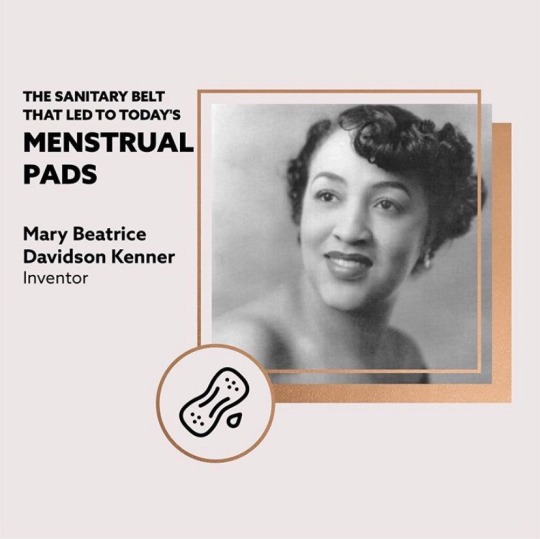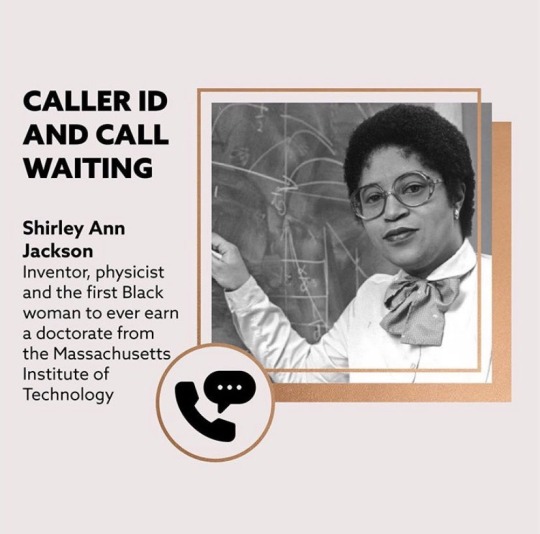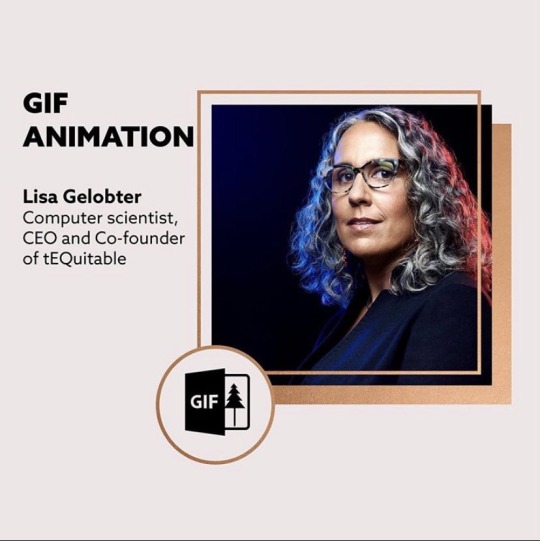Posts that talk about womyn I love, womyn who are making a difference, making herstory, and positive posts for womyn
Don't wanna be here? Send us removal request.
Text
(tiktok)
cool, calm and collected strongwoman queen, gabi dixson 👑 with the 330lbs per hand
59K notes
·
View notes
Text
instagram
Germany has taken a significant step in supporting women’s health by extending maternity leave to those who experience a miscarriage after the 13th week of pregnancy. This new legislation acknowledges the profound physical and emotional impact of miscarriage, providing women with the necessary time to heal. It’s a progressive move that sets a new standard for workplace support and women’s rights.
463 notes
·
View notes
Text

lisa brice, "untitled," 2023-2024, oil on trace
30K notes
·
View notes
Text
148K notes
·
View notes
Photo





Tatyana Fazlalizadeh’s Street Art Confronts Sexual Harassment
188K notes
·
View notes
Text
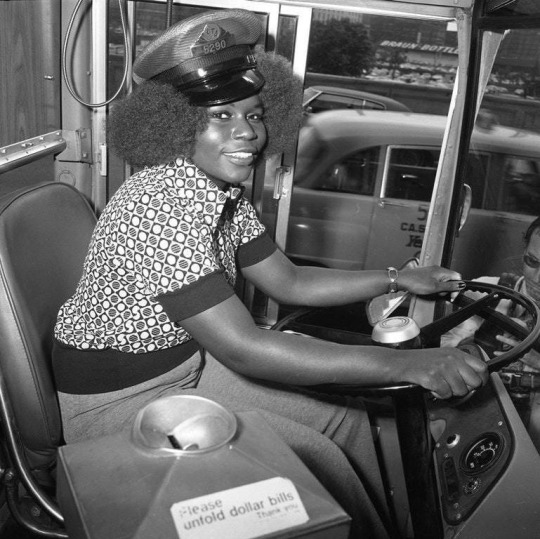

“Mary Wallace was the first woman bus driver with the Chicago Transit Authority in 1974. Her job applications were rejected for three years, but her persistence paid off. She was eventually hired under an affirmative action program. Wallace became one of the city’s most popular drivers over her thirty-three year career.”
Happy Black History Month!
23K notes
·
View notes
Text
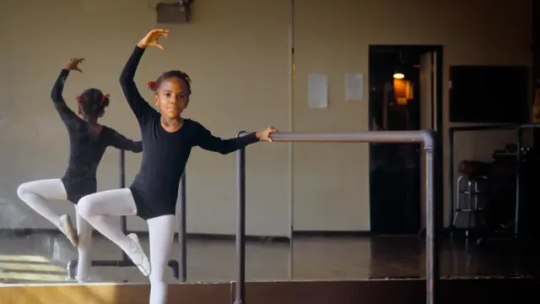
The devastating impacts on reproductive rights and individual lives after the fall of Roe continue apace.
One study showed that as early as five years old, society perceives Black girls as “less innocent” and “more adult-like” than their non-Black counterparts, placing an unfair expectation on them to act more maturely.
The latest high-profile account to detail the gut-wrenching effects arrived in Time this week. The story—”She Wasn’t Able to Get an Abortion. Now She’s a Mom. Soon She’ll Start 7th Grade”—centers on Ashley, a 13-year-old girl from Mississippi who in the fall of 2022, according to her mother, was raped by a stranger in her yard.
The assault resulted in a pregnancy that she was unable to terminate because of the strict abortion bans in Mississippi and its bordering states, each enacted after the overturning of Roe. Ashley’s mother, Regina, told Time that she didn’t have the resources to take her daughter to the nearest clinic hundreds of miles away in Chicago.
This story, recounting Ashley’s trauma and highlighting the many systems that failed her, is an incredibly difficult read. But one line has especially stayed with me:
“One nurse came in and asked Ashley, “What have you been doing?” Regina recalls. That’s when they found out Ashley was pregnant.”
This is the question a nurse chose to ask when confronted with a Black child in clear distress, who had shown up to the emergency room unable to stop vomiting. Not “What happened to you?” or “Are you okay?”
The nurse reportedly asked a 13-year-old child, “What have you been doing?” It’s hard not to see the suspicion and implicit blame in the question. That culpability, deployed with equal amounts of derision and judgment, is something that I and many other Black women and girls are all too familiar with.
Victim blaming reaches people of all races. But Black girls stand at a uniquely horrifying intersection where both gender and skin color are weaponized against them.
One study showed that as early as five years old, society perceives Black girls as “less innocent” and “more adult-like” than their non-Black counterparts, placing an unfair expectation on them to act more maturely.
In 2017, Georgetown Law’s Center on Poverty and Inequality reported that participants in a study perceived Black girls as needing less nurturing, protection, and comfort than white girls. These virulent misconceptions, of course, can be traced back to historically racist stereotypes about Black femininity. GLCPI wrote:
“These images and historical stereotypes of Black women have real-life consequences for Black girls today. According to [Jamila] Blake and colleagues, “these stereotypes underlie the implicit bias that shapes many [adult’s] view of Black females [as] … sexually promiscuous, hedonistic, and in need of socialization.”
The results of this adultification are pervasive. Black girls are often punished more severely in schools and the criminal justice system than their white peers. The ripple effects can be found all over popular culture.
Huff Post’s Taryn Finley attributed this societal perception as a key reason why R. Kelly, whose accusers were primarily Black women and girls, was able to remain successful despite allegations of child sexual abuse surrounding him for several decades. And they can be found in questions like, “What have you been doing?”
Girlhood is a delicate period. It should be a time for crushes and school dances, not confronting the dark realities of misogyny and racism. It’s time for society to allow young Black girls to be girls, instead of forcing them into becoming women. Not ask, like the nurse in this story, “What have you been doing?”
3K notes
·
View notes
Photo

When at 19, Mehnaz became pregnant for the fifth time, she panicked. She already had four daughters, and her husband was threatening to throw her out if she had another. So she did what millions of Pakistani women do every year: She had an abortion.
Like many of those women, her abortion was partly self-administered. “I kept taking tablets — whatever I laid my hands on,” she says. “I lifted heavy things” — like the furniture in her tiny living room. She drank brews of boiled dates — many Pakistanis believe the beverage triggers labor.
Mehnaz says she felt “a terrible pain in my stomach.” Her husband took her to a midwife, who told him the baby was dead. “She gave me injections and it came out,” Mehnaz says.
That was eight years ago. Since then she has had two more abortions, each time because she feared the baby would be a daughter.
Mehnaz, whose last name is being shielded to protect her identity, is one of millions of Pakistani women who have abortions each year. The deeply conservative Muslim country is estimated to have one of the highest rates of abortion in the world, based on a 2012 study by the New York-based Population Council, a nonprofit that advocates family planning. The rate that year was 50 abortions for every 1,000 women aged 15 to 44 — roughly four times higher than in the U.S.
Why The Abortion Rate In Pakistan Is One Of The World’s Highest
Image: Diaa Hadid/NPR Caption: Mehnaz sits inside her home in Abbottabad, northern Pakistan. She has one son and six daughters. She has also had three abortions, fearing she would have more girls.
4K notes
·
View notes
Text
Female Astronomer’s Diversity Efforts Removed From Federal Bio.
0 notes
Video
youtube
Japan’s legendary boxing champion, Naoko Fujioka, is about to make her final challenge.
By: 藤岡 奈穂子 Naoko Fujioka
Naoko Fujioka (18-2-1) is one of the best stories in boxing. The woman didn’t start boxing until she was in her late 20s and didn’t make her pro debut until she was 31 years old. By 33 she ended up knocking out the champ to win her first world title. And in the 12 years since then she became Japan’s first ever 5 division world champion. That makes her one of only 7 boxers to ever pull that off. Floyd, Pacquiao, De La Hoya, Leonard, Hearns, and Amanda Serrano are the only other boxers to do it.
And the thing is she’s still 45 years old and she’s still so freaking good. The closest analogue I can get to her is like Yoel Romero. She made her money being an explosive hard hitting swarmer and she’s still super athletic at 45 years old.

153 notes
·
View notes
Photo

Ainu women from Hokkaido with a traditional facial tattoo, these tattoos were exclusively done on females by older females such as Aunts or Grandmothers in their family.
2K notes
·
View notes
Link
After a grueling hike through the jungle, traversing valleys and vibrant rice terraces to the top of the mountain where the teetering village awaits, visitors, tourists, and fans arrive sweaty and gleeful at Buscalan village, Kalinga, in the Philippines’ far north.
Buscalan, which has narrow dirt walkways, limited electricity, and no cell phone service, is the most popular destination in Kalinga Province. Tourism to the village has increased significantly from an estimated 30,000 in 2010 to 170,000 in 2016.
Fang-od Oggay emerges from her wooden hut in the distance, and there is a literal rush towards her. Everyone wants a glimpse of this quirky, fastidious centenarian.
She is known worldwide as a living legend and the last tribal tattoo artist to hold the title of Mambabatok—the name given to traditional tattooists by the Kalinga ethnic group for thousands of years.
“When you die, a tattoo is the only thing that will remain on your body, so it is a treasure, a treasure that lasts,” says Oggay.
For over eight decades, Oggay has been single-handedly keeping the traditions of the Butbut tribe alive through a unique method of hand-tap tattooing.
Keep reading
14 notes
·
View notes
Text



Since the holiday toy drive post is circulating again, I figured this would also be helpful! Food insecurity is such a massive problem in America, in general, and if you have the means to help feed others, I think you should take that opportunity. Here are some other tips:
1. If you’re planning on donating items from your own pantry, please check the expiration dates on the packaging. Think of your donations as gifts to bestow, not castoffs to be rid of. It’s awful to think of people feeling like they got scraps someone else just didn’t want. Everyone deserves dignity with their meals.
2. If you’d rather give money to a food bank, that’s also great since they buy food in bulk and know what items are most wanted/needed!
3. Not everyone has access to appliances like stoves or microwaves or hot plates so if you can donate items that don’t need to be heated up, that would also be greatly appreciated!
🫶🏽🫶🏽🫶🏽🫶🏽🫶🏽🫶🏽🫶🏽🫶🏽🫶🏽🫶🏽🫶🏽🫶🏽🫶🏽🫶🏽🫶🏽🫶🏽
51K notes
·
View notes
Text


Congratulations to Tara Dower for becoming the fastest person in history to complete the Appalachian Trail! The 31-year-old from Virginia completed the 2,168 mile (3,489 km) backcountry trail in 40 days, 18 hours, and five minutes, a distance usually covered by an A.T. thru-hiker in five to seven months.
To set the record, Dower ran and hiked an average of 54 miles each day on the often rocky and steep trail, which includes a total vertical gain of 465,000 feet as it runs through fourteen states. She started her daily runs at 3:30 am and continued for approximately 17 hours with several short breaks for meals and 90-second "dirt naps."
Dower used her record-setting run to raise money for Girls on the Run, saying that she hopes her feat will inspire girls and women. “I hope more women get out there,” she said. “It’s about finding our true potential. And, you know, if you beat the men, that’s an extra bonus.” When she reached the trail's end on Saturday night, the exhausted but jubilant Dower fell to her knees and put her hands on the bronze plaque that reads, “A footpath for those who seek fellowship with the wilderness.”
9/28/2024
Article | Tara Treks | Girls on the Run
1K notes
·
View notes
Text
“Imagine a woman in the long skirts and high collar of the early 20th century standing in front of the painting she created. It is a massive piece—about 10 feet tall by 8 feet wide—and it is not a landscape, a portrait, a still life, nor a scene from myth or history. Dominating the composition is a bold yellow form reminiscent of a plant or sea creature, glowing amid colorful, biomorphic shapes and vigorous lines. This is just one of 10 such works that she has created almost entirely alone—sometimes walking on her work as she lays down the paint—and one of 193 radically abstract paintings that she has made in a few short years, between 1906 and 1915. None of these details fit with the story told in museums and art history courses. We know the first abstract painters so well that we often refer to them by last names alone: Kandinsky, Malevich, Mondrian. We know who is celebrated for doing “action painting” on giant canvases laid on the floor—Pollock. Each of these men has been lauded for opening a way into new territory. As it turns out, that territory had already been explored by another artist. Her name was Hilma af Klint.”
— Who Was Hilma af Klint?: At the Guggenheim, Paintings by an Artist Ahead of Her Time by Caitlin Dover
105K notes
·
View notes

